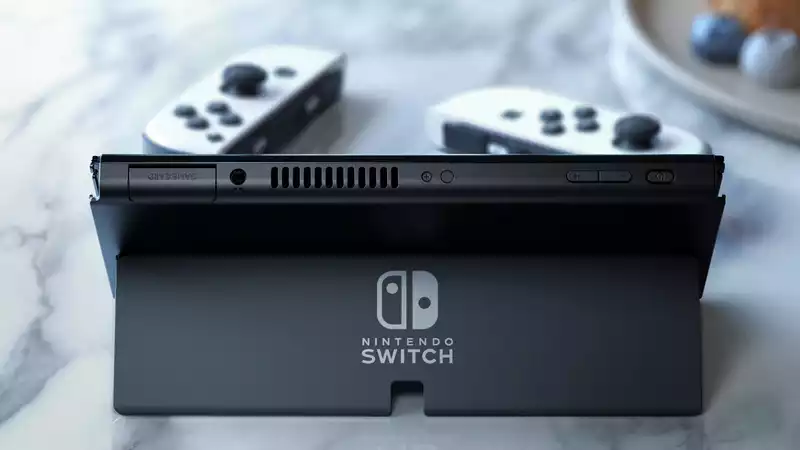The Nintendo Switch OLED is not the Switch Pro. Aside from an updated OLED screen, better speakers, and a more adjustable kickstand, the internal specifications are the same as the current Switch, only $50 more.
However, Nintendo's apparent commitment to doing the least amount of work possible runs headlong into current consumer expectations: the Nintendo Switch OLED does not appear to support Bluetooth headset connectivity. This is a feature that was included in the PSP Go, which was released 12 years ago in 2009.
According to the spec list released by Nintendo, the Switch OLED will have the same Wi-Fi and Bluetooth chips as those currently in circulation. The Bluetooth version on board is 4.1, which is sufficient to handle multiple controllers and wireless earbuds; the PSP Go had Bluetooth 2.0. Nintendo could have implemented Bluetooth headset capability in software, but intentionally did not.
There are numerous possible reasons for the omission. The frequency of the headphones might interfere with the controller connection. There could be a perceptible lag during the game that makes the experience unbearable. Alternatively, even though Bluetooth 5.0 has existed since 2016, the 4.1 chip was simply the cheapest component to procure, and it would not be worth the trouble to build a motherboard redesigned to accommodate the latest 5.2 chip. This is because, while Nintendo fans may complain about the lack of support, they will still buy the console.
Whatever Nintendo's justification to its shareholders, this minimally necessary, profit-oriented approach that the company takes with its hardware revision upgrades will, at worst, hobble the renowned Japanese game maker and, at the very least, undermine consumer confidence and create a mismatched consumer experience.
Nintendo has a history of prioritizing profit over utility. And before anyone starts chanting that Nintendo is a corporation and has a fiduciary duty to its shareholders, consider for a moment its cartridge obsession. In launching the Nintendo 64, Kyoto chose to stick with the outdated and expensive cartridge rather than the much cheaper and more data-dense compact disc. By doing so, Nintendo believed that it would have a firm grip on the manufacturing side of the game business and ensure that it would earn royalties from third parties, since the cartridges had to be manufactured by Nintendo. However, by choosing this strategy, Nintendo bled third-party developers who wanted to create content for PlayStation, which could hold 700 megabytes of data on a CD, compared to the N64's maximum of 64 megabytes. In addition, royalties were much cheaper.
Had Nintendo opted for CDs, a superior technology, the Nintendo 64 might have sold more systems. As it stands, the N64 has sold about 33 million units worldwide, compared to the PlayStation's 102 million.
Also consider the mismatch in displays in the Nintendo 3DS handheld console lineup: some shipped with TN panels, others with IPS panels. Others had a high-quality IPS screen on the top and a TN panel on the bottom. However, the few dual IPS configurations are selling for around $500 on eBay. This points to a certain disdain on Nintendo's part and a willingness to sell inferior products for the same price. For fans who wanted the best 3DS, it was like winning the lottery.
Of course, the lack of Bluetooth in the Switch OLED does not mean that sales will suffer. Presumably, the system will sell well. However, the omission points to a familiar pattern of Nintendo not wanting to jump over the redesign hurdle, instead getting off the track and waiting at the finish line.
For those who want to make excuses for Nintendo, understand that the company is upselling this device for $50 more than the current Nintendo Switch. Nor is rigid OLED significantly more expensive than Nintendo's LCD displays. According to our interviews, Samsung has lowered the price of rigid OLED displays in hopes of attracting buyers as more phones opt for flexible displays. While likely to be more expensive, these new displays will not be significantly more expensive. That is why phones like the OnePlus Nord N10 5G, which costs less than $400, have OLED panels. It is not unreasonable to expect consumers to expect more comfort at $350.
Hardcore gamers wanted a more significant mid-gen refresh of the Nintendo Switch - one that could handle Super Mario 3D World + Bowser's Wrath at 720p or better - but the Switch OLED is not it. And a company as beloved as Nintendo should be more respectful of the wishes of its most ardent fans.
.









Comments